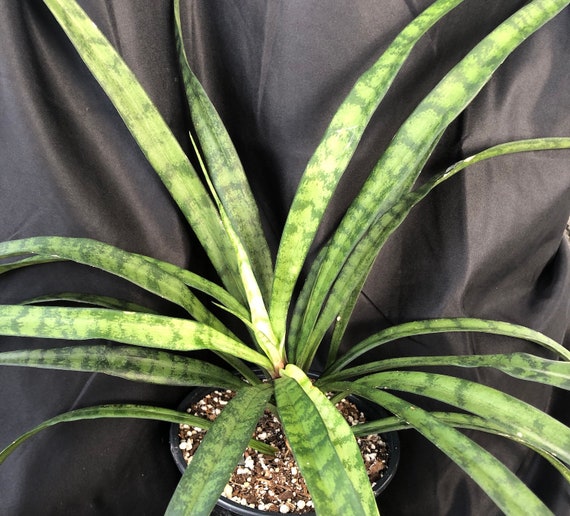An Unbiased View of Snake Plant Leaves Turning Yellow
Wiki Article
Our Snake Plant Leaves Turning Yellow Statements
Table of ContentsUnknown Facts About Snake Plant Leaves Turning YellowFacts About Snake Plant Leaves Turning Yellow UncoveredThe 7-Minute Rule for Snake Plant Leaves Turning Yellow6 Easy Facts About Snake Plant Leaves Turning Yellow Described3 Easy Facts About Snake Plant Leaves Turning Yellow Described
If overwatering in snake plants is not remedied, the yellow spots of your mother-in-law's tongue plant will turn dark brown or black. To rule out any other root causes of serpent plant leaf yellowing, eliminate the plant from its pot and check the roots to see if they're soggy and have a foul smell.Meanwhile, just the leaves facing the home window will certainly transform yellow for indoor snake plants if photodamage is the concern. Roots have a greater chance of melting when there is excess plant food and nutrients in the dirt. This after that hinders the intake of water and vital nutrients, triggering the mother-in-law's tongue plant to stress and anxiety and spot yellow leaves.
Below's exactly how to conserve a serpent plant that's transforming yellow: Quit irrigating your snake plant until the soil dries out up entirely if the yellowing results from overwatering. Return to watering, but not greater than when per week. Generally of thumb, stay clear of watering your snake plant until the leading two inches of the soil really feel completely dry.

This will certainly aid to boost water drainage rates, taking into consideration the high temperature level and sunlight problems during the day. Snake Plant Leaves Turning Yellow. Correct water drainage requires using a fast-draining dirt mix and a growing pot with drain openings at the base. It is best to use a soil mix which contains perlite and crude sand for quick drain
The Facts About Snake Plant Leaves Turning Yellow Uncovered
There's a positive side as you can expand new plants by propagating the few continuing to be leaves that are still healthy. Referrals.Water is vital in soaking up nutrients required for chlorophyll. Absence of water causes the decomposition of chlorophyll.
Without water, your plant can not soak up the mineral, some important for chlorophyll manufacture. Thus you might observe some yellowing or staining. Snake plants like a damp, not soggy, and you should not allow the potting mix to dry out completely for a very long time. We recommend sprinkling your snake plant after the soil dries out entirely or many of it is completely dry.
A significant one might cause overwatering, and if it is also little, your plants will certainly dry out swiftly. When watering, fill the dirt till excess water comes from drainage holes. Put any water that accumulates on the dish. Lastly, never ever comply with a serpent plant watering session. Rather, constantly really feel to ensure the potting mix is dry at the explanation very least half-down the pot.
Snake Plant Leaves Turning Yellow Fundamentals Explained
If not, provide some top watering. Finally, get a rough estimate on exactly how frequently you water your snake plant and set a pointer to avoid disregard. Before sprinkling, first, feel the dirt with your finger. Light is essential for the biosynthesis of chlorophyll in all blooming plants. Too a lot will certainly deteriorate chlorophyll.You can likewise obtain chilly frames. In hot summertimes or throughout warm front, take your plants to cooler places. Likewise, do not place your plants near home heating unit vents, radiators, fire places, or anything that discharges warm. Lastly, prevent temperature unexpected declines and spikes. They will stress your plant.
A lack will trigger in-between veins yellowing on young leaves. When it is lacking, plants gather nitrates yet get redirected here fall short to use them to make proteins.
Despite the fact that serpent plants have a document for being virtually difficult to kill, they nevertheless experience a fair share of problems. You are not the only one who has actually seen that your serpent plant's fallen leaves are transforming yellow. Snake Plant Leaves Turning Yellow. We will analyze the reasons serpent plant leaves turn yellow and just how to handle it
The Basic Principles Of Snake Plant Leaves Turning Yellow

A wet container will certainly consider considerably larger than a dry pot, so eventually, you ought to have the ability to figure out how completely dry your plant is based upon the mass of its container. Serpent plant leaves may come to be yellow if you allow your plant dry out, after that wait up until the soil is entirely dry before rewatering.
You require to consider greater Read Full Article than just exactly how frequently you water serpent plants. You likewise must consider what strikes the fluid when it is put in the pot. After sprinkling your plant, you ought to not let the origins remain in water for a couple of days because this can cause origin rot.

The Basic Principles Of Snake Plant Leaves Turning Yellow
You just require to supply enough supply and guarantee right drainage to permit the extra water to drain out. Not also much nor insufficient; there will certainly be an appropriate environment for fungi health problems if there is any standing water. The snake plants can be sprinkled every 2 to 6 weeks.After placing them in the early morning sun, you will discover that serpent plants' growth rate would certainly raise and show up much healthier. Nonetheless, positioning them in the exterior morning sunlight will require extra water, so once weekly suffices. Nonetheless, if the location gets too much sunshine and the surface really feels dry, you can sprinkle them twice weekly.
Report this wiki page